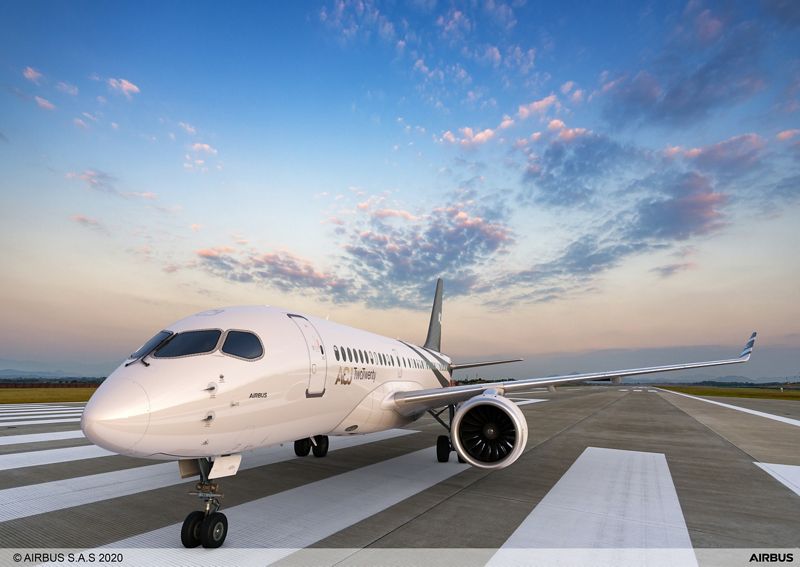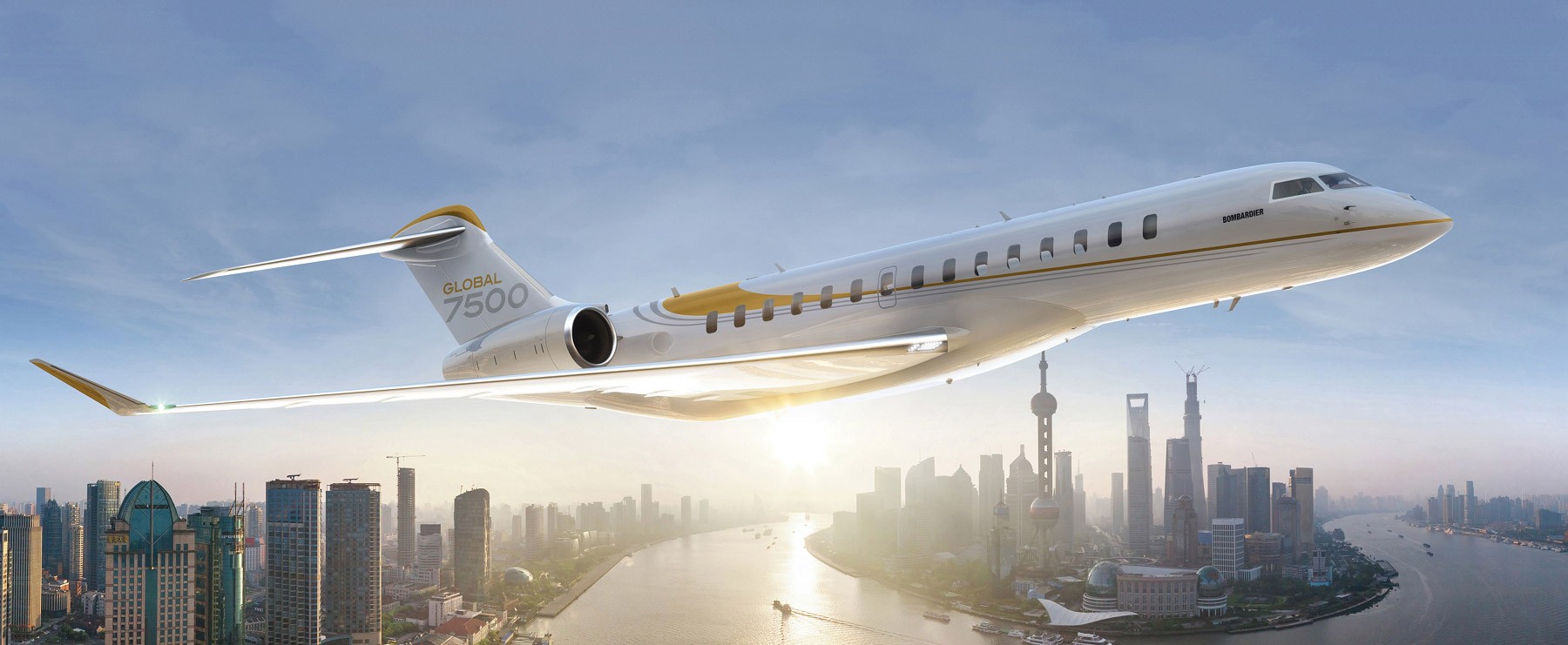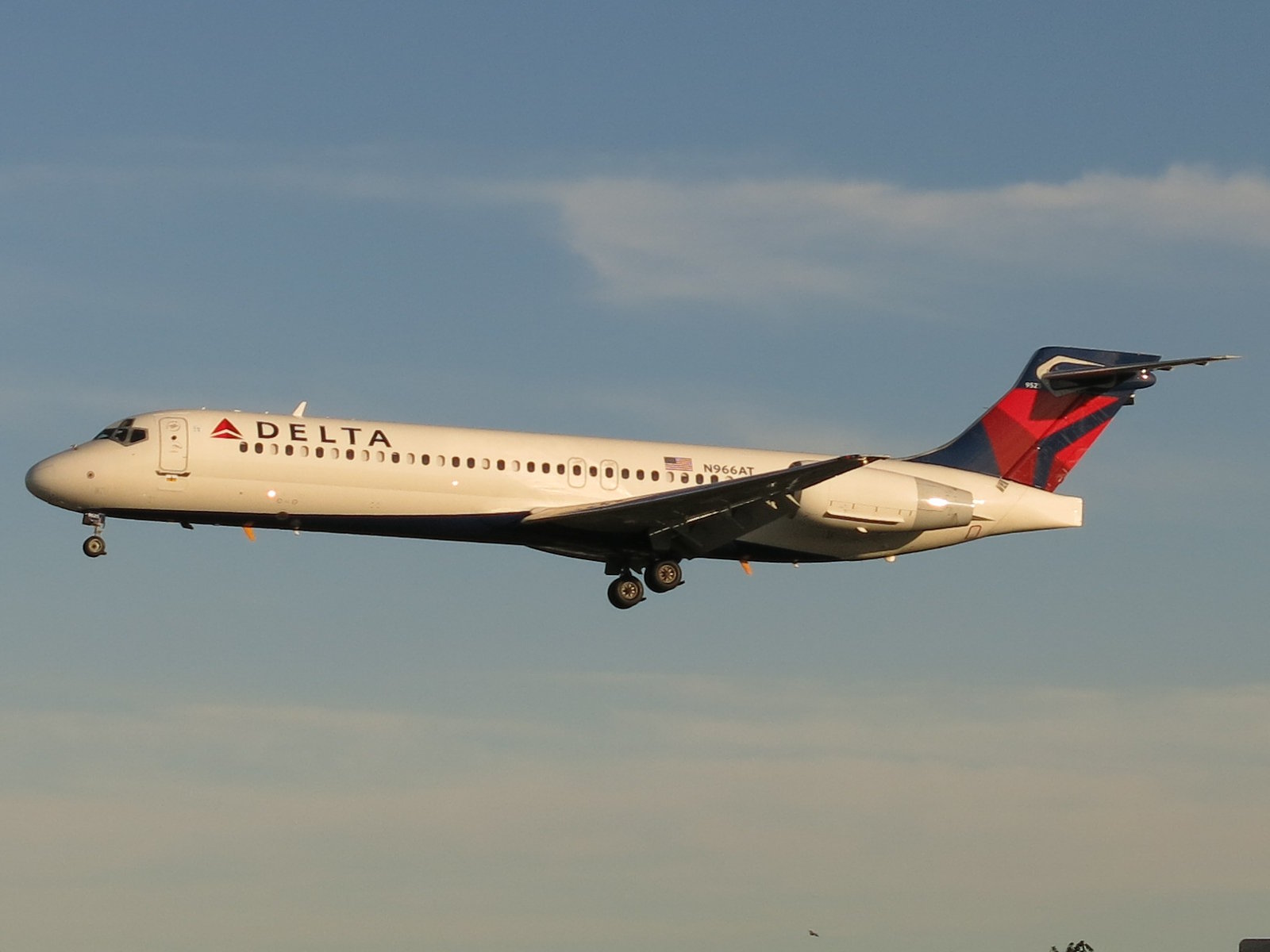Leeham News and Analysis
There's more to real news than a news release.
 Leeham News and Analysis
Leeham News and Analysis
- The Boeing 767 Cross Section, Part 1 November 24, 2022
- Movie Review: Devotion November 21, 2022
- China will accelerate development of its commercial aerospace sector November 21, 2022
- Bjorn’s Corner: Sustainable Air Transport. Part 46. eVTOL comparison with helicopter November 18, 2022
- The economics of a 787-9 and A330-900 at eight or nine abreast November 16, 2022
Airbus’ TwoTwenty, its first real business jet
By Bjorn Fehrm
September 28, 2021, ©. Leeham News: When Airbus got the A220 airliner series from Bombardier, it also got the base for a competitive business jet.
Airbus, like Boeing, has produced Corporate Jets under its ACJ (Airbus Corporate Jets) since 1997 by converting its passenger A319, A320, A330, and A350 to one-off jets for Corporations, States, or wealthy individuals.
With the business jet based on A220-100, this changes. It’s no longer a one-off production but a fully-fledged Bizjet like the Gulfstream 650/700 or Bombardier Global 6500/7500, produced in series and with a semi-custom modular interior.
Posted on September 28, 2021 by Bjorn Fehrm
Pontifications: IAI moves to cement lead in 777 P2F conversions
- IAI, Etihad ink Boeing 777-300ER P2F deal.
- De Havilland union sniffs kerosene.
Aug. 30, 2021, ©Leeham News: The agreement last week between IAI and Etihad Airways to open a Boeing 777-300ER P2F conversion line in Abu Dhabi gives a major boost to the burgeoning program.
In addition to the history-making tie-up between an Israeli company and the United Arad Emirates, and a commitment by Etihad to convert 777s to freighters with IAI, the move is a major coup for IAI to win other Arab airline business.
IAI and the former GECAS, which was acquired by AerCap, launched the first 777 P2F program in 2019. GECAS ordered 15 conversions of the -300ER and optioned 15 more.
Posted on August 30, 2021 by Scott Hamilton
Exclusive: Mitsubishi ponders restarting CRJ production
By Scott Hamilton
July 6, 2021, © Leeham News: Mitsubishi is considering restarting production of the discontinued CRJ, LNA confirmed with multiple sources.
Mitsubishi Heavy Industries discontinued production with the completion of the last of the small backlog it acquired with the June 1, 2019, purchase of the program from the ailing Bombardier. The final 15 CRJ900s were completed during the early months of the COVID-19 pandemic. The Montreal Mirabel Airport production line was shut down. The tooling was removed and stored. The buildings were turned over to Airbus, which now uses them for A220 production.
“Our primary focus remains the support of the CRJ operating fleet,” said Ross Mitchell, vice president of Shared Services. “Clearly, the regional jet market is important to us, but we have made no commitment to move forward in this respect.”
Posted on July 6, 2021 by Scott Hamilton
Bjorn’s Corner: The challenges of airliner development. Part 7. Transport Category Aircraft
June 11, 2021, ©. Leeham News: Last week, we scaled a nine-seat aircraft to a 19-seat aircraft and examined some of the pros and cons of such a change. The aircraft are certified to the 14 CFR Part 23 rules in the US, labeled “Normal Category Aircraft“.
This week we scale the aircraft up one step further to understand product certification and operation rules for the larger Transport Category Aircraft (14 CFR Part 25) class.
Posted on June 11, 2021 by Bjorn Fehrm
Mitsubishi’s MHIRJ expanding MRO floor space by 100,000 sf
Subscription Required
Now open to all Readers
By Scott Hamilton
Part 2 of 2. Part 1 appeared here.
Introduction
June 1, 2021, © Leeham News: It’s been one year today since Mitsubishi Heavy Industries (MHI) closed the acquisition of Bombardier’s CRJ program and global aftermarket support system.
 In that year, MHI “suspended” development of the M90/M100 SpaceJet regional airliner, reduced funding by 99% and all but shuttered its business. The entire airline and aerospace supply chain industry believes MHI won’t restart the program.
In that year, MHI “suspended” development of the M90/M100 SpaceJet regional airliner, reduced funding by 99% and all but shuttered its business. The entire airline and aerospace supply chain industry believes MHI won’t restart the program.
But the Bombardier aftermarket business, renamed MHIRJ Aviation Group, appears to be thriving. MHIRJ expanded, opening a consulting business.
MHI also invested $20m in the expansion of its West Virginia and Arizona CRJ MRO lines. The company celebrates the expansions next month.
A small amount to be sure, but it nevertheless reversed the lack of monies by the nearly bankrupt Bombardier.
“We have the biggest regional MRO network in the world out of Bridgeport, West Virginia, and Tucson, Arizona,” said Ismail Mokabel, Senior Vice President, Head of Aftermarket. At both sites, MHIRJ can run about 30 simultaneous aircraft or equal lines of maintenance at any given time, he said.
MHIRJ is adding another 100,000 square feet of space, expanding two new hangars that will be up and running within the next 12 to 18 months. The contract was signed May 27.
Summary
- Regional airline aftermarket MRO business fell 35%-40% during the COVID-19 pandemic.
- MHIRJ profit-and-loss already is at pre-COVID level.
- The company will develop performance improvement packages for CRJ.
- May expand MRO services to other aircraft types after 2023.
Posted on June 1, 2021 by Scott Hamilton
Mitsubishi grows ex-Bombardier business even as SpaceJet rests in limbo
Subscription Required
Now open to all Readers
By Scott Hamilton
Part 1 of 2 Parts
Introduction
May 31, 2021, © Leeham News: June 1 is the first anniversary of the acquired by Mitsubishi Heavy Industries of the Bombardier CRJ program and global support network.
It was on the surface a bittersweet moment.
MHI and Bombardier announced the deal June 25, 2019.
MHI’s aircraft subsidiary, Mitsubishi Aircraft Corp. (MITAC) was then going full steam ahead with the development of the M100 SpaceJet and certification of the M90 SpaceJet, previously known as the MRJ90.
But in March 2020, the COVID-19 global pandemic exploded. By June, MHI put the SpaceJet program in “suspense.” All operations outside Japan were closed and hundreds of employees were laid off. Flight testing in Washington State was terminated. MITAC’s headquarters at Nagoya Airport was shuttered and funding was reduced by 99%. The future of the SpaceJet program is in doubt. MHI says only it will “reassess” during its current fiscal year ending next March 31.
But MHI continued with the CRJ acquisition. After the close, it was renamed MHIRJ.
During the ensuing year, MHIRJ continues to support the global CRJ fleet. It also launched a new advisory/consulting business that encompasses mainline jets, airlines and airports.
Summary
- CRJ customers saw business as usual following the close.
- Pivoting from SpaceJet to advisory-consulting work.
- With SpaceJet in limbo, MHI grows acquisition business.
Posted on May 31, 2021 by Scott Hamilton
Pontifications: Embraer’s China ambitions
March 22, 2021, © Leeham News: Embraer wants to become a big player in China.
“We see a huge market potential there,” said Arjan Meijer, CEO of Embraer Commercial Aviation, in an interview with Nikkei Asia. The news outlet continued, “The company expects worldwide demand for 5,500 jets with up to 150 seats over the next 10 years. A third of that will come from Asia, with a large part of it from China, Meijer added.”
However, China presents risks and few rewards to companies wishing to gain a significant foothold. This is especially true for commercial aviation companies. China has high ambitions for the commercial aviation industry. Partnering with China in this sector produced more heartbreak than success.
Posted on March 22, 2021 by Scott Hamilton
Pontifications: 2020 Retrospective–the worst ever seen
Dec. 21, 2020, © Leeham News: This is my last Pontification of 2020. I’ll be off between the Christmas and New Year’s holidays.
It’s only fitting to look back at what is the worst year in commercial aviation—ever.
I’ve just completed my 41st year in this industry. I’ve seen two Gulf Wars, SARS, 9/11, the Great Recession and several economic cycles.
Lockheed and McDonnell Douglas exited the commercial airliner business.
I’ve seen three groundings: the McDonnell Douglas DC-10, Boeing 787 and 737 MAX. I’ve been on site of two significant crashes: the American Airlines DC-10 in Chicago and Delta Air Lines’ 727 in Dallas. I flew over a third, a Delta L-1011 in Dallas the day after it happened.
I worked for the first new airline certified by the Civil Aeronautics Board in 40 years, the first Midway. I also went through one bankruptcy and one merger, each part of the deregulation shake-out.
As a reporter, I covered some of the business giants, including Bob Crandall, Herb Kelleher, John Leahy and others.
It’s been a great four decades.
But nothing compares to the global industry disaster of 2020.
Posted on December 21, 2020 by Scott Hamilton
The 717 and A220, Part 2: Operational economics comparison
Subscription Required
By Bjorn Fehrm
Introduction
December 10, 2020, © Leeham News: Last week, we introduced the Boeing 717 and its closest replacement size-wise, the Airbus A220-100. Delta, a major 717 customer, is accelerating the replacement of the 717 with the A220-100 under the pressure of the COVID19 pandemic.
We use our performance model to understand why. What are the gains when going from the 717 to an A220-100?
Summary
- The 717 version of the DC-9 architecture produced a rugged and well-liked short-haul airliner. It’s five abreast cabin is preferred over the six-abreast Boeing 737 and Airbus A320.
- It’s size-wise in the same 115 seat bracket as the 15 years younger Airbus A220-100. It’s 40 years old airframe architecture holds up well compared to the modern A220.
- The engines of the two are also 15 years apart. But the Rolls-Royce BR715 of the 717 was originally designed to fly on fast business jets, necessitating a low by-pass ratio design. This is a handicap when used on lower speed airliners. It shows against the high bypass ratio Pratt & Whitney PW1500G of the A220.
Posted on December 10, 2020 by Bjorn Fehrm
Lessors to Take Growing Share of Fleeting the Future
By Kathryn B. Creedy
Air Lease Executive Chair Steven Udvar Hazy expects lessors to play a larger role in aircraft fleeting in the future, according to comments made during yesterday’s Aviation Week Fireside Chat with the lessor.
“I don’t see lessors going below 40%,” he told Air Transport World Editor Karen Walker. “I see it creeping up to perhaps 50% or 55% and that includes operating leases and various other exotic mechanisms.”
Udvar Hazy pointed to the poor financial shape of the world’s airlines which have used all their current levers to increase liquidity to ride out the Covid 19 crisis.
Posted on October 13, 2020 by Kathryn Creedy
Email Subscription
Twitter Updates
My TweetsAssociations
Aviation News-Commercial
Commentaries
Companies-Defense
Resources
YouTube
Archives
- November 2022
- October 2022
- September 2022
- August 2022
- July 2022
- June 2022
- May 2022
- April 2022
- March 2022
- February 2022
- January 2022
- December 2021
- November 2021
- October 2021
- September 2021
- August 2021
- July 2021
- June 2021
- May 2021
- April 2021
- March 2021
- February 2021
- January 2021
- December 2020
- November 2020
- October 2020
- September 2020
- August 2020
- July 2020
- June 2020
- May 2020
- April 2020
- March 2020
- February 2020
- January 2020
- December 2019
- November 2019
- October 2019
- September 2019
- August 2019
- July 2019
- June 2019
- May 2019
- April 2019
- March 2019
- February 2019
- January 2019
- December 2018
- November 2018
- October 2018
- September 2018
- August 2018
- July 2018
- June 2018
- May 2018
- April 2018
- March 2018
- February 2018
- January 2018
- December 2017
- November 2017
- October 2017
- September 2017
- August 2017
- July 2017
- June 2017
- May 2017
- April 2017
- March 2017
- February 2017
- January 2017
- December 2016
- November 2016
- October 2016
- September 2016
- August 2016
- July 2016
- June 2016
- May 2016
- April 2016
- March 2016
- February 2016
- January 2016
- December 2015
- November 2015
- October 2015
- September 2015
- August 2015
- July 2015
- June 2015
- May 2015
- April 2015
- March 2015
- February 2015
- January 2015
- December 2014
- November 2014
- October 2014
- September 2014
- August 2014
- July 2014
- June 2014
- May 2014
- April 2014
- March 2014
- February 2014
- January 2014
- December 2013
- November 2013
- October 2013
- September 2013
- August 2013
- July 2013
- June 2013
- May 2013
- April 2013
- March 2013
- February 2013
- January 2013
- December 2012
- November 2012
- October 2012
- September 2012
- August 2012
- July 2012
- June 2012
- May 2012
- April 2012
- March 2012
- February 2012
- January 2012
- December 2011
- November 2011
- October 2011
- September 2011
- August 2011
- July 2011
- June 2011
- May 2011
- April 2011
- March 2011
- February 2011
- January 2011
- December 2010
- November 2010
- October 2010
- September 2010
- August 2010
- July 2010
- June 2010
- May 2010
- April 2010
- March 2010
- February 2010
- January 2010
- December 2009
- November 2009
- October 2009
- September 2009
- August 2009
- July 2009
- June 2009
- May 2009
- April 2009
- March 2009
- February 2009
- January 2009
- December 2008
- November 2008
- October 2008
- September 2008
- August 2008
- July 2008
- June 2008
- May 2008
- April 2008
- March 2008
- February 2008










